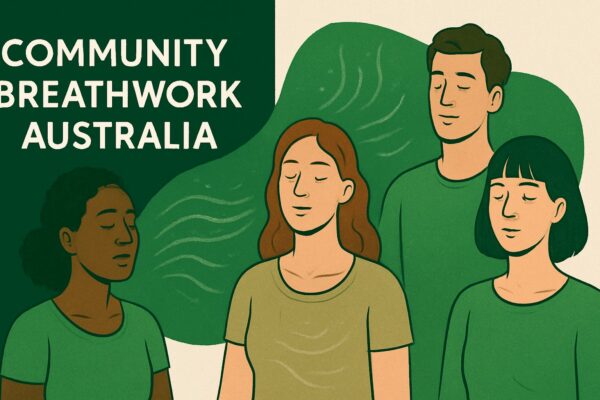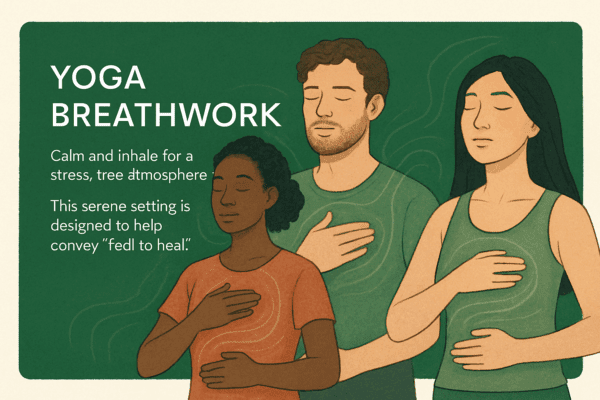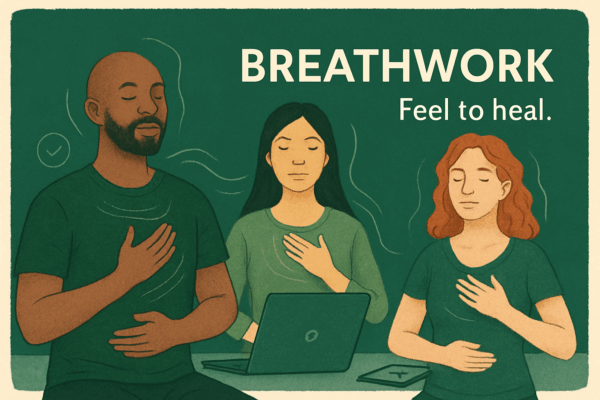Imagine guiding others to transformation with every breath—2025 could be your year to become a certified breathwork teacher. As global interest in conscious breathing soars for stress reduction and healing, more people are searching for expert guides. The demand for breathwork teacher training is rising, opening doors to personal growth, new career paths, and the chance to help others thrive.
This guide is your step-by-step roadmap. You’ll discover what breathwork teacher training involves, the skills and certifications you’ll need, how to choose the right program, and how to launch your career as a confident, impactful teacher.
Understanding Breathwork: Foundations and Modalities
Breathwork is the art and science of consciously guiding your breath to unlock profound physical, emotional, and spiritual shifts. For anyone considering breathwork teacher training, understanding the roots and range of practices is essential.
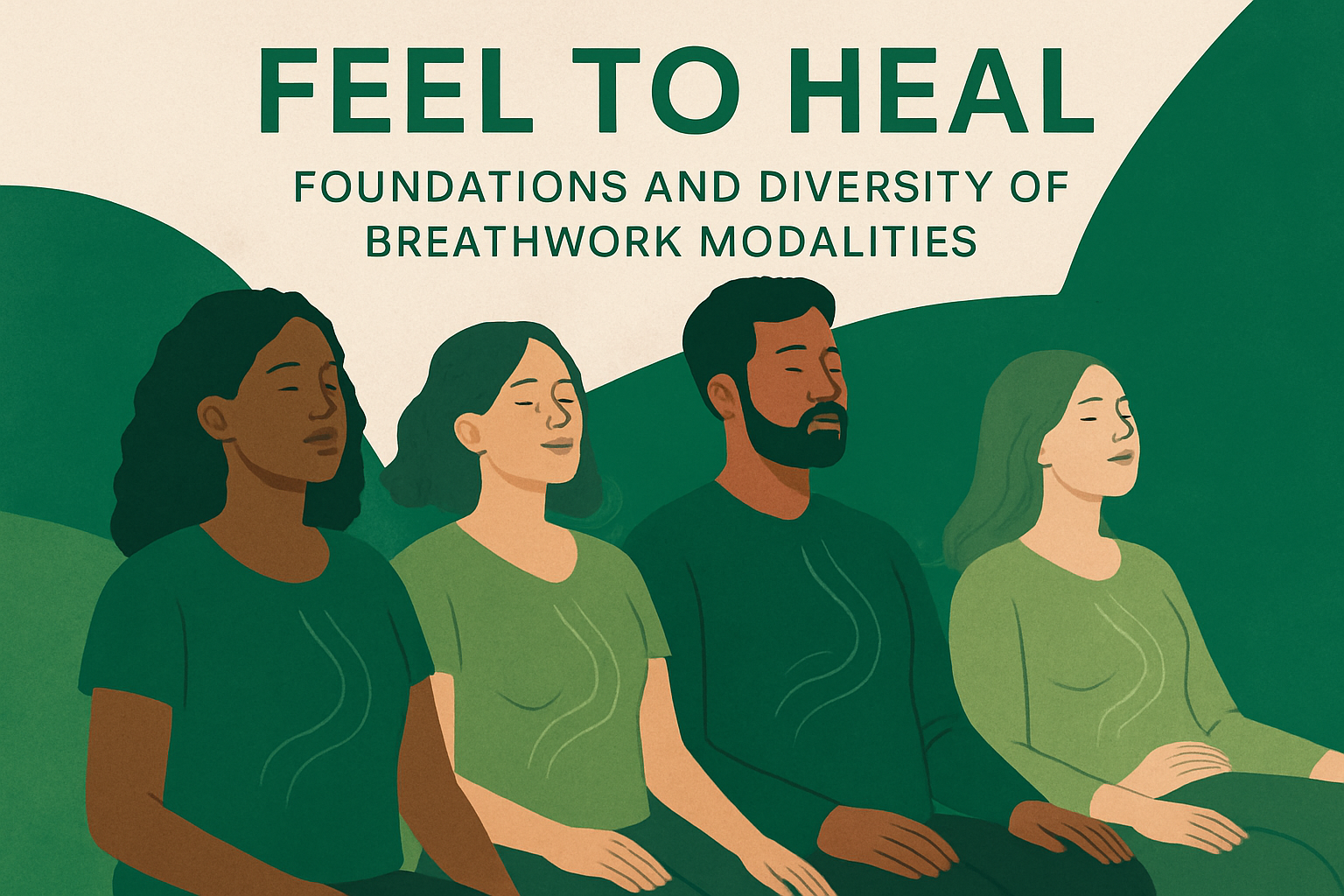
What Is Breathwork?
Breathwork is the conscious control and manipulation of the breath to support healing, clarity, and transformation. Its roots reach back thousands of years, weaving through yogic Pranayama, shamanic rituals, and ancient healing traditions.
Today, breathwork teacher training introduces a wide array of modalities. These include:
- Pranayama: Ancient yogic techniques for channeling life force and balancing energy.
- Holotropic Breathwork: Developed by Stanislav Grof, this method uses accelerated breathing and evocative music to access expanded states.
- Biodynamic Breathwork and Somatic Therapy: Integrates breath with body awareness to support trauma release and emotional regulation. For those exploring breathwork teacher training, learning about the integration of breathwork and somatic therapy provides a foundational understanding of how breath impacts both mind and body.
- SOMA Breath: A modern protocol blending rhythmic breathing, music, and meditation to induce altered states and promote wellbeing.
- Other styles: Rebirthing, Transformational Breath, and more.
Leading programs teach over 25 distinct breathwork techniques, ensuring a comprehensive foundation for trainees.
On a scientific level, breathwork directly influences the autonomic nervous system, brain wave activity, and emotional responses. Conscious breathing can shift us from stress (sympathetic) to calm (parasympathetic) states—offering rapid relief from anxiety or overwhelm.
A Cambridge University study found that protocols like SOMA Breath can induce altered states similar to psychedelics, increasing neural complexity and boosting positive emotional states. This opens doors for deep healing and insight without the need for substances.
Breathwork is also recognized for its role in trauma release and nervous system regulation. By pairing breath with somatic awareness, practitioners help clients move through old patterns and restore balance.
Common applications include:
- Stress and anxiety reduction
- Healing trauma and emotional wounds
- Balancing energy and boosting vitality
Understanding these foundations prepares you for the journey of breathwork teacher training and the many ways you can support others.
Why Breathwork Is Gaining Global Momentum
The world is facing a surge in mental health challenges and chronic stress. As a result, breathwork teacher training is more relevant than ever, offering a powerful tool for both prevention and healing.
Breathwork responds directly to the rise in anxiety, burnout, and emotional blocks. Unlike some wellness practices, breathwork is highly accessible—no expensive equipment or complex routines required. This safety and simplicity make it appealing to people of all backgrounds and abilities.
The popularity of breathwork is skyrocketing, with online and in-person sessions, workshops, and retreats drawing participants worldwide. The shift to digital platforms has made training and guided experiences available to anyone with an internet connection.
Industry partnerships and endorsements have further fueled this growth. SOMA Breath, for example, is trusted by leading wellness platforms and companies like Mindvalley, Gaia, Zumba, and Microsoft, giving breathwork teacher training a stamp of global credibility.
As demand grows, more individuals seek certified facilitators who can guide transformative sessions safely and ethically. The breathwork field is evolving rapidly, and teacher training programs are expanding to keep pace, ensuring graduates are well-equipped to meet the needs of modern clients.
Becoming knowledgeable in breathwork modalities and their applications puts you at the forefront of this global movement. Whether your goal is personal growth or a new professional path, breathwork teacher training opens doors to meaningful impact and lifelong learning.
The Benefits of Breathwork Teacher Certification
Becoming certified through breathwork teacher training opens doors to profound personal growth, new career pathways, and the chance to create real change in your community. Let’s explore the transformative benefits that make this journey so rewarding.

Personal and Professional Transformation
Breathwork teacher training is a truly holistic path. As you learn to guide others, you’ll also deepen your own healing and self-awareness. This journey starts with embodiment—practicing and experiencing the breathwork techniques yourself before ever stepping into a facilitator role.
Through regular practice, you’ll gain direct insight into how breathwork shifts emotions, calms the mind, and unlocks new layers of personal growth. Many programs, such as Loka Yoga School’s LOKA Method™, emphasize that true teaching power comes from embodied practice. This approach ensures you lead from a place of authenticity and empathy.
Alongside personal transformation, breathwork teacher training equips you with practical skills. You’ll learn to hold safe, ethical, and trauma-informed spaces for others. This includes understanding the nervous system, setting clear boundaries, and guiding both individuals and groups with confidence.
By the end of your certification, you’ll not only feel more centered and self-aware, but also fully prepared to help others navigate stress, anxiety, and emotional release through breathwork.
Career Opportunities and Industry Demand
The wellness industry is experiencing explosive growth, and breathwork teacher training sits at the heart of this trend. As more people seek holistic solutions for mental health and stress, the demand for certified breathwork teachers has never been higher.
Graduates can pursue a variety of fulfilling roles: leading group sessions, private coaching, corporate wellness programs, retreats, or even launching online courses. The potential to build a sustainable business—or add breathwork to your existing practice in yoga, therapy, or coaching—is enormous.
Accreditation is key to building trust and credibility. Programs recognized by bodies like Yoga Alliance, ACCPH, or CPD ensure your certification is respected and often required for professional opportunities. Some certifications, like those from SOMA Breath, enable instructors to start earning income within weeks of completion.
If you’re wondering about job security, the outlook is bright. According to data on breathwork industry growth in 2025, the field is set to expand by 21% this year, fueled by cultural shifts and rising wellness awareness. It’s a dynamic space where passion meets purpose.
Impact on Clients and Communities
The true reward of breathwork teacher training is the impact you’ll have on others. Certified teachers help clients overcome anxiety, depression, insomnia, and even deep-seated trauma. Through guided breathwork, people experience breakthroughs—sometimes in just a single session.
Transformational breathwork sessions can unlock altered states of consciousness, paving the way for emotional healing and lasting change. As a teacher, you’ll witness clients develop resilience, greater self-awareness, and a renewed sense of purpose.
The ripple effect extends far beyond the individual. By facilitating group workshops, community classes, or online gatherings, you help create spaces for collective healing. With over a million SOMA Breath fans worldwide and countless testimonials from Loka Yoga School graduates, the global impact is clear.
Breathwork teacher training is more than a certification—it’s a catalyst for positive change in yourself, your clients, and your community.
Exploring Breathwork Teacher Training Options
Choosing the right breathwork teacher training can shape your journey as both a facilitator and a lifelong learner. With an array of formats, curriculums, and accreditation types available, it’s important to understand your options before making a commitment.

Online vs. In-Person Training
Today’s breathwork teacher training programs come in several formats: fully online, in-person, or hybrid. Each style offers unique benefits and challenges.
Online training stands out for its flexibility. You can join from anywhere, study at your own pace, and often access live virtual sessions. This is ideal for busy professionals or those who need to balance work and family. However, it may lack the immersive group energy of a physical classroom.
In-person training provides hands-on practice and face-to-face mentorship. You’ll build community, experience real-time feedback, and enjoy deeper immersion. The trade-off? It often requires travel, set dates, and a larger time commitment.
Hybrid programs blend online learning with on-site intensives, offering the best of both worlds.
| Format | Flexibility | Community | Hands-On Learning |
|---|---|---|---|
| Online | High | Moderate | Limited |
| In-Person | Low | High | Extensive |
| Hybrid | Moderate | High | Good |
No matter the format, ensure your breathwork teacher training aligns with your learning style and lifestyle.
Accreditation and Recognition
Accreditation is a cornerstone of reputable breathwork teacher training. Recognized bodies like Yoga Alliance, ACCPH, and CPD uphold high standards for curriculum and ethics. Choosing an accredited program not only boosts your credibility but also reassures future clients of your professionalism.
If you aim to teach internationally, check for global recognition. Certifications from organizations such as Yoga Alliance or ACCPH are widely respected and often required by studios and wellness centers worldwide. For example, Loka Yoga School’s training is Yoga Alliance YACEP certified, while SOMA Breath holds ACCPH accreditation.
Accreditation also opens doors to professional directories, networking events, and ongoing education credits. This helps you stay connected and maintain professional growth throughout your career.
Curriculum and Teaching Methods
A robust breathwork teacher training curriculum covers a blend of science, embodiment, and facilitation skills. Expect to study breath science, anatomy, physiology, and the role of the nervous system. Trauma-informed facilitation is a must for safe and ethical practice.
Most programs teach a variety of techniques, from ancient Pranayama to modern breathwork styles. Guided practices and experiential modules help you embody each technique before teaching others.
Business and marketing modules are increasingly common. Programs like SOMA Breath’s BIG Membership include tools for building your practice and growing your client base. Look for a curriculum that balances theory, practice, and business acumen to prepare you for real-world success.
Duration, Cost, and Commitment
Breathwork teacher training programs vary widely in duration and cost. Entry-level certifications, such as Loka Yoga’s 20-hour online course, offer a quick start for under $400. More immersive programs can span 100–200+ hours, with costs rising accordingly.
Some trainings include ongoing memberships or community access. For instance, Loka Yoga offers continued support for a small monthly fee after initial certification. Consider your available time, budget, and desired depth of study when evaluating programs.
Balancing training with work or family life is crucial. Set realistic expectations for study hours, live session attendance, and practice teaching to ensure you stay motivated and on track.
Choosing the Right Program for You
Selecting the best breathwork teacher training is a personal journey. Start by clarifying your goals: Are you seeking personal growth, or do you plan to teach professionally? Assess your preferred modality, teaching philosophy, and desired learning format.
Research instructor credentials and read student testimonials. Evaluate the level of community support, mentorship, and post-graduate opportunities each program provides. For a deeper dive into program selection, the guide on breathwork teacher training considerations offers valuable insights on accreditation and teaching philosophy.
Ultimately, choose a program that resonates with your values and sets you up for long-term fulfillment as a breathwork teacher.
Step-by-Step Guide: How to Become a Certified Breathwork Teacher in 2025
Ready to turn your passion for conscious breathing into a rewarding career? Follow this step-by-step path to breathwork teacher training and discover how you can make a real impact in 2025. Each stage builds your skills, confidence, and ability to guide others through powerful transformation.
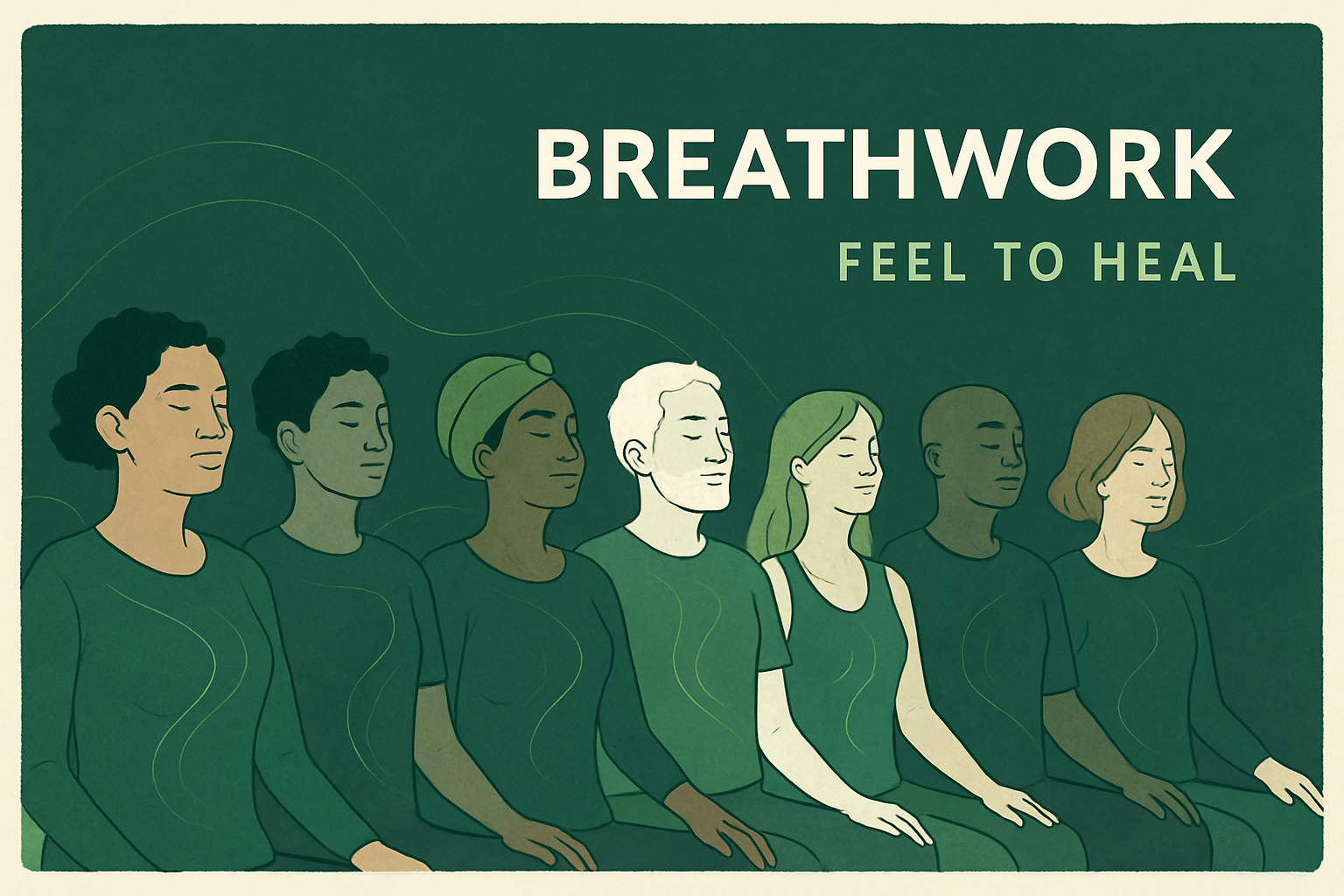
Step 1: Deepen Your Personal Breathwork Practice
Begin your journey with self-exploration. Regular breathwork sessions are essential for developing authentic understanding and embodiment. Experiment with different techniques, from ancient pranayama to modern dynamic styles.
Keep a journal to capture your experiences, insights, and shifts in emotional or physical well-being. Attend workshops—online or in-person—to expand your exposure. Immersing yourself in various practices will lay a strong foundation for your breathwork teacher training.
Step 2: Research and Select Accredited Training Programs
Next, explore breathwork teacher training programs that align with your values, goals, and lifestyle. Accreditation is crucial—look for programs recognized by Yoga Alliance, ACCPH, or other reputable bodies.
Compare curriculums, teaching formats, and instructor backgrounds. Read reviews and connect with graduates for honest feedback. For a comprehensive overview of available certifications and resources, check out the Breathwork Certification Tag Overview.
Step 3: Enroll and Commit to the Training Process
Once you’ve chosen your path, enroll in your selected breathwork teacher training. Prepare for a transformative learning experience by setting a realistic study schedule and creating a dedicated practice space.
Engage fully in live sessions and group discussions. Complete all assignments, theory modules, and guided practices. Commitment to the process is key to developing the skills and confidence needed as a future breathwork facilitator.
Step 4: Master Breathwork Science, Techniques, and Ethics
Dive deep into the anatomy and physiology behind breathwork. Learn how the nervous system responds to different breathing techniques. Study at least 20–25 core modalities, ensuring you experience and understand their effects.
Focus on trauma-informed facilitation and ethical boundaries. A quality breathwork teacher training will emphasize both safety and professionalism, so you can confidently guide individuals and groups.
Step 5: Gain Practical Experience and Feedback
Practice is where theory meets real life. Lead sessions for friends, peers, or volunteer groups to refine your teaching style. Record your sessions for self-review and seek constructive feedback from mentors.
Participate in supervised teaching opportunities if available. The more hands-on experience you gain during breathwork teacher training, the more prepared you’ll be for real-world facilitation.
Step 6: Obtain Certification and Accreditation
Complete all required assessments, practical exams, and final evaluations. Upon successful completion, you’ll receive your certification from a recognized body.
Log your training hours for continued education credits. Join professional directories and teacher networks to boost your visibility. Certification ensures you meet the standards for ethical and effective breathwork teacher training.
Step 7: Launch Your Breathwork Teaching Career
With your certification in hand, it’s time to launch your career. Design your first classes, workshops, or online offerings. Build a professional online presence with a website, testimonials, and social media.
Network with wellness professionals, studios, and retreat centers. Continue learning through advanced courses and ongoing practice. The journey through breathwork teacher training prepares you to inspire transformation in others and create a thriving, meaningful career.
Inside a Breathwork Teacher Training Curriculum: What to Expect
Curious about what truly happens inside a breathwork teacher training? Let’s peel back the curtain and walk through the curriculum, so you know what to expect as you embark on this path.
Core Curriculum Components
Every breathwork teacher training starts with the foundations. You’ll dive into breath science, covering anatomy, physiology, and the energetic dynamics of breath. Theoretical modules explore the history, philosophy, and language of breathwork.
Practical modules are hands-on, guiding you step-by-step through 20–25 core techniques, from ancient pranayama to modern methods. You’ll learn about the nervous system, stress, and trauma, all essential for safe facilitation.
Programs like Loka Yoga School and SOMA Breath emphasize a holistic curriculum. Many also integrate breathwork practices for mental health, helping you understand how breathwork supports emotional wellbeing.
Embodiment and Personal Practice
Embodiment is at the heart of true breathwork teacher training. Expect daily guided sessions to help you internalize the techniques. Journaling, mindful self-reflection, and emotional processing are woven into your routine.
You’ll be encouraged to experience each technique deeply before teaching it to others. This “embodiment before facilitation” approach ensures your teaching is authentic and grounded.
Personal breakthroughs are common, as the curriculum supports your own transformation alongside your professional growth. By making breathwork a part of your life, you’ll be able to share its power with genuine confidence.
Facilitation and Teaching Skills
Facilitation training is a cornerstone of any breathwork teacher training. You’ll study trauma-informed methods, learning to create safe, inclusive spaces for all. Consent-based facilitation and clear ethical boundaries are emphasized.
You’ll practice designing sessions, using structure templates, and adapting breathwork for diverse clients. Communication skills and presence are developed so you can lead with confidence and compassion.
Many programs highlight the role of breathwork in building emotional resilience, helping you support clients through stress and transformation. By the end, you’ll be prepared to guide both groups and individuals through powerful experiences.
Advanced and Bonus Modules
Once you’ve mastered the basics, advanced modules add depth to your breathwork teacher training. You may explore mudras, bandhas, and advanced pranayama, as well as cutting-edge modern breathwork techniques.
Professional ethics are a major focus. You’ll study teacher-student relationships, how to handle difficult situations, and the standards set by organizations like the International Breathwork Foundation. For a deep dive, review the breathwork ethics and standards that top programs follow.
Some curriculums include unique modules like music technology, DJ skills for immersive sessions, or therapeutic applications for specialized groups.
Business and Community Building
Breathwork teacher training isn’t just about technique; it’s also about building a thriving practice. Expect modules on marketing, branding, and attracting clients. You’ll learn to create online courses, guided meditations, and passive income streams.
Networking is key. Programs often offer private communities, alumni groups, and ongoing support. You’ll be shown how to leverage digital tools and business strategies to grow your presence.
With these skills, you can confidently launch workshops, retreats, or online offerings, knowing you have the foundation for a sustainable breathwork career.
Assessment and Certification
Your journey through breathwork teacher training culminates in assessment and certification. This typically involves practical exams, teaching demonstrations, and written knowledge tests.
Mentorship and feedback loops are standard, guiding you as you refine your teaching style. Once you pass, you’ll receive certification—often from a recognized body—validating your skills and professionalism.
Graduates are supported with guidance on next steps, from joining professional directories to continuing education. You’ll leave ready to inspire transformation in others, fully equipped and certified.
Career Pathways and Opportunities for Certified Breathwork Teachers
Certified through breathwork teacher training, your career can unfold in diverse, rewarding directions. Whether you dream of guiding intimate groups, building a thriving business, or sparking transformation in your community, the opportunities are expanding every year. Let’s explore the many pathways open to you after certification.
Expanding Your Professional Reach
After breathwork teacher training, you’ll have the foundation to lead group classes, workshops, and retreats—both in-person and online. Many graduates offer private sessions focused on trauma healing, stress management, or peak performance.
You can also integrate breathwork into existing professions, such as yoga, coaching, therapy, fitness, and corporate wellness. Certified teachers frequently collaborate with studios, wellness centers, or even corporate teams looking to boost employee well-being.
Some facilitators create unique offerings, like wellness retreats or movement events. For example, SOMA Breath instructors combine breathwork with ecstatic dance or high-ticket coaching programs. This flexibility lets you tailor your practice to your passions and the needs of your clients.
Building a Sustainable Breathwork Business
Breathwork teacher training equips you with skills to build a fulfilling and sustainable business. Start by developing your brand, website, and marketing materials to attract your ideal clients. Digital tools and business modules—often included in advanced trainings—help streamline your workflow.
Consider monetizing through online courses, memberships, or downloadable resources. Many certified teachers design specialized programs for athletes, trauma survivors, or corporate teams. Some programs, like SOMA Breath’s BIG Membership, provide ongoing business training and tech tools to support your growth.
If you want a deeper dive into the curriculum and certification process, explore the breathwork facilitator certification details from Alchemy of Breath for inspiration on structuring your offerings.
Continuing Education and Advanced Training
The journey doesn’t end with your initial breathwork teacher training. Many facilitators pursue advanced certifications in specialized modalities or trauma-informed approaches. Workshops, conferences, and professional gatherings are excellent for networking and skill-building.
Staying updated with the latest research and trends in breathwork and wellness ensures your practice remains impactful. Advanced training can also open doors to teach other aspiring facilitators and expand your professional influence.
Ongoing education keeps your sessions fresh and allows you to adapt to evolving client needs. This commitment to learning is what sets truly exceptional breathwork teachers apart.
Making a Lasting Impact
With the foundation from breathwork teacher training, you’ll help clients achieve meaningful results—reduced anxiety, better sleep, and greater emotional resilience. Facilitators often witness profound transformations in both individuals and groups.
Your work fosters healing not just on the personal level but within entire communities. If you’re curious about how breathwork supports long-term well-being, the Role of Breathwork in Emotional Resilience offers deeper insight into this powerful outcome.
Sharing success stories, testimonials, and data (such as the global reach of SOMA Breath and Loka Yoga School graduates) can inspire others to embark on their own journey.
Navigating Challenges and Setting Realistic Expectations
Every career comes with its challenges, and breathwork teacher training prepares you to meet them with confidence. You may encounter client resistance, emotional releases, or business hurdles. Maintaining ethical standards and practicing self-care are essential for longevity in this field.
Seek mentorship and connect with peer communities for ongoing growth. Realistic expectations and a strong support network help you stay resilient and passionate.
With dedication and the right training, you can create a career that is both sustainable and deeply fulfilling—one breath at a time.
If you’re feeling inspired to take the next step and actually become a certified breathwork teacher in 2025, you don’t have to wait to begin. The Biodynamic Breathwork Institute’s accredited online training program is designed for people just like you—those ready to deepen their own healing, gain practical skills, and confidently guide others through transformation, all while learning at your own pace. Whether you’re starting fresh or adding to your professional toolkit, this path offers the flexibility and support you need. Ready to start your journey? Join our accredited online training and let’s breathe new life into your future together.

